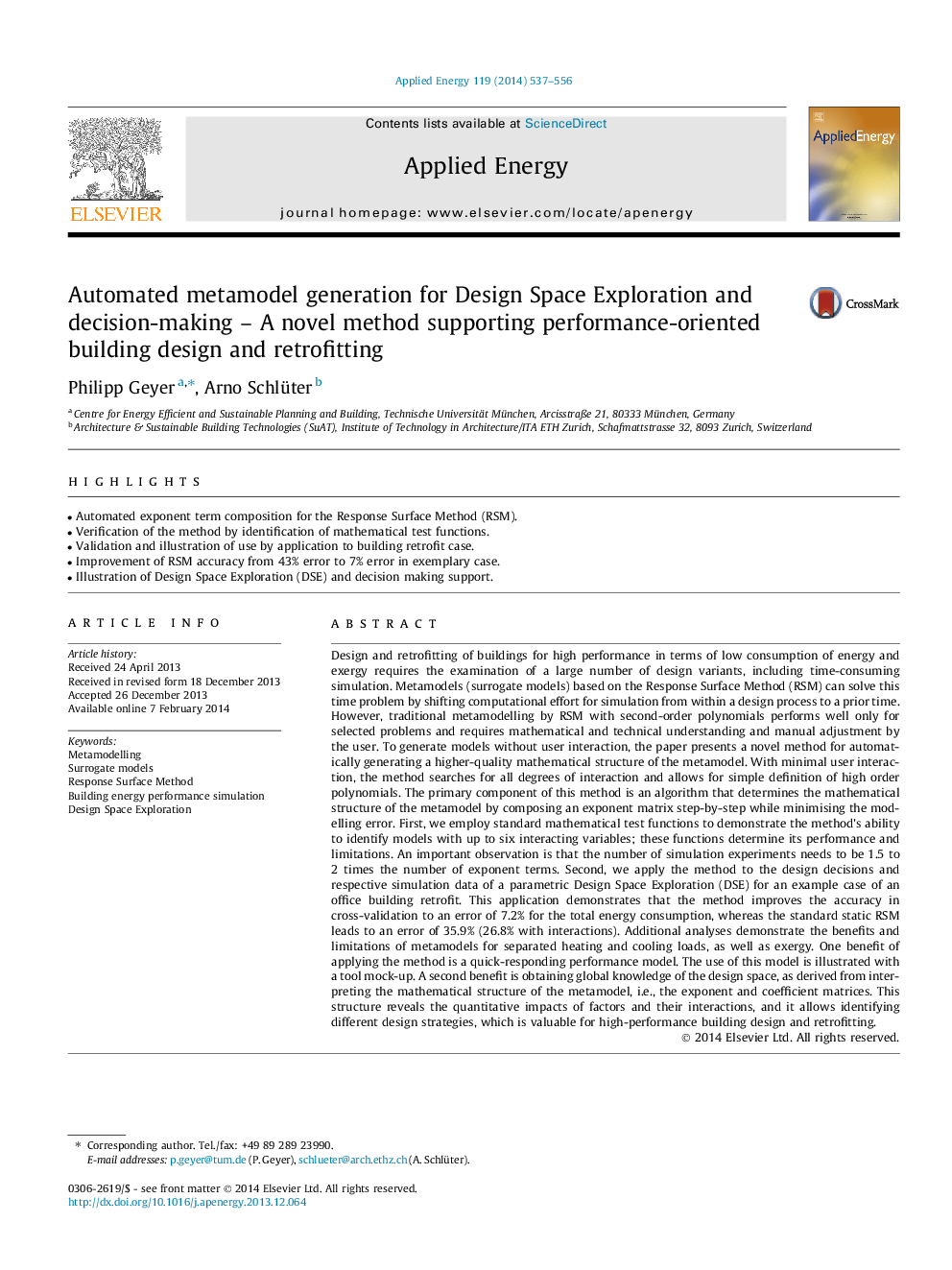| کد مقاله | کد نشریه | سال انتشار | مقاله انگلیسی | نسخه تمام متن |
|---|---|---|---|---|
| 6691009 | 501906 | 2014 | 20 صفحه PDF | دانلود رایگان |
عنوان انگلیسی مقاله ISI
Automated metamodel generation for Design Space Exploration and decision-making - A novel method supporting performance-oriented building design and retrofitting
ترجمه فارسی عنوان
نسل متماول اتوماتیک برای اکتشاف و طراحی تصمیم گیری فضایی طراحی - روش جدیدی است که از طراحی ساختمان و تطبیق پیشرفت های عملکردی پشتیبانی می کند
دانلود مقاله + سفارش ترجمه
دانلود مقاله ISI انگلیسی
رایگان برای ایرانیان
کلمات کلیدی
متاموئل کردن، مدل های جایگزین، روش سطحی پاسخ، شبیه سازی عملکرد انرژی ساختمان، اکتشاف فضایی طراحی،
موضوعات مرتبط
مهندسی و علوم پایه
مهندسی انرژی
مهندسی انرژی و فناوری های برق
چکیده انگلیسی
Design and retrofitting of buildings for high performance in terms of low consumption of energy and exergy requires the examination of a large number of design variants, including time-consuming simulation. Metamodels (surrogate models) based on the Response Surface Method (RSM) can solve this time problem by shifting computational effort for simulation from within a design process to a prior time. However, traditional metamodelling by RSM with second-order polynomials performs well only for selected problems and requires mathematical and technical understanding and manual adjustment by the user. To generate models without user interaction, the paper presents a novel method for automatically generating a higher-quality mathematical structure of the metamodel. With minimal user interaction, the method searches for all degrees of interaction and allows for simple definition of high order polynomials. The primary component of this method is an algorithm that determines the mathematical structure of the metamodel by composing an exponent matrix step-by-step while minimising the modelling error. First, we employ standard mathematical test functions to demonstrate the method's ability to identify models with up to six interacting variables; these functions determine its performance and limitations. An important observation is that the number of simulation experiments needs to be 1.5 to 2 times the number of exponent terms. Second, we apply the method to the design decisions and respective simulation data of a parametric Design Space Exploration (DSE) for an example case of an office building retrofit. This application demonstrates that the method improves the accuracy in cross-validation to an error of 7.2% for the total energy consumption, whereas the standard static RSM leads to an error of 35.9% (26.8% with interactions). Additional analyses demonstrate the benefits and limitations of metamodels for separated heating and cooling loads, as well as exergy. One benefit of applying the method is a quick-responding performance model. The use of this model is illustrated with a tool mock-up. A second benefit is obtaining global knowledge of the design space, as derived from interpreting the mathematical structure of the metamodel, i.e., the exponent and coefficient matrices. This structure reveals the quantitative impacts of factors and their interactions, and it allows identifying different design strategies, which is valuable for high-performance building design and retrofitting.
ناشر
Database: Elsevier - ScienceDirect (ساینس دایرکت)
Journal: Applied Energy - Volume 119, 15 April 2014, Pages 537-556
Journal: Applied Energy - Volume 119, 15 April 2014, Pages 537-556
نویسندگان
Philipp Geyer, Arno Schlüter,
